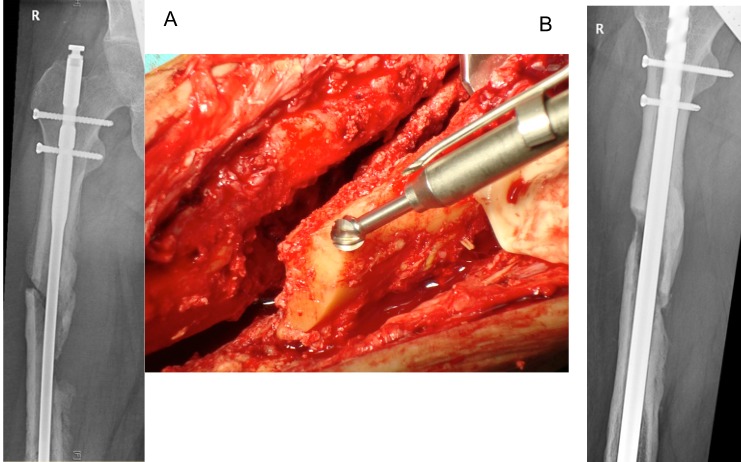Figure 6.
A 24 year old male who was in a car accident with femur fracture treated with intramedullary nailing. He sustained a postoperative infection, with 3 revisions and exchange of the femoral nail. The patient presented with fever, persistent fistulation, and positive cultures (methicillin sensitive S.aureus and methicillin resistant S.epidermidis). A) Preop. X-Ray. The presence of a loose nail with unstable pseudarthrosis and major osseous defect at the non-union and around the distal locking screws (Cierny-Mader stage 4). The septic non-union was exposed and debrided. A high speed burr with stepless rotation up to 60.000rpm and integrated irrigation/cooling system provides abrasion of scleroses down to slightly bleeding bone (“Paprika-sign”), using drills of variable sizes. B) Postoperative. An exchange of the intramedullary nail was performed with rigid fixation by locking screws proximally and distally, with defects filled with antibiotic-bone-compound ABC.

